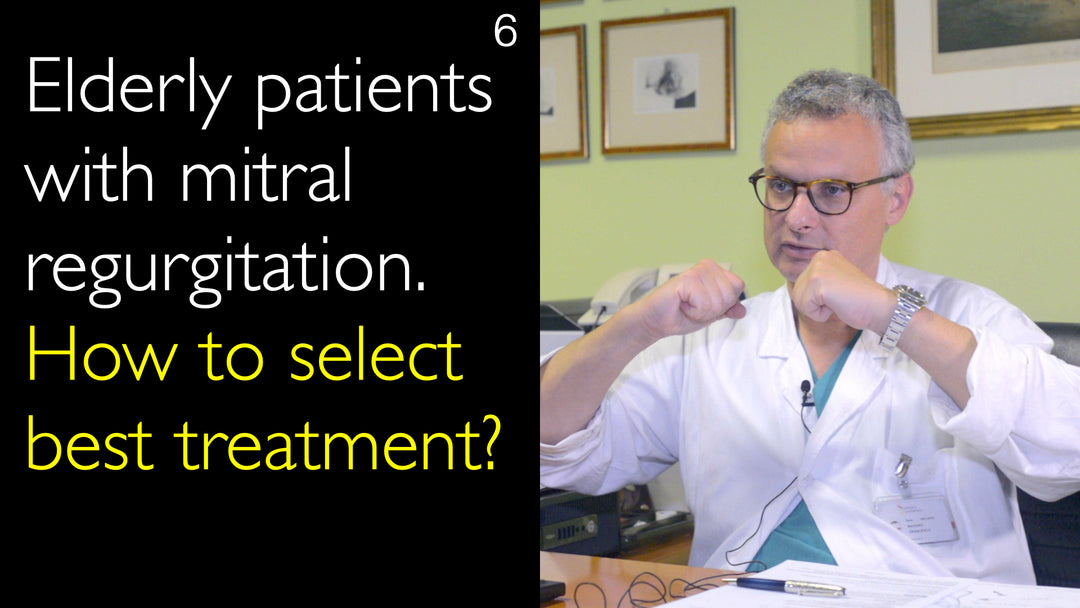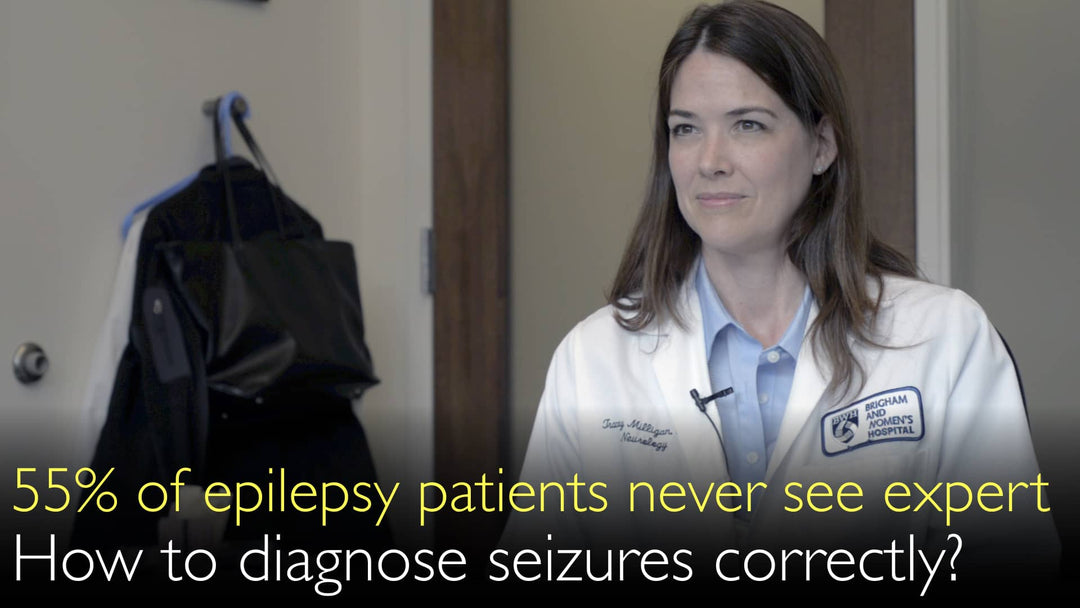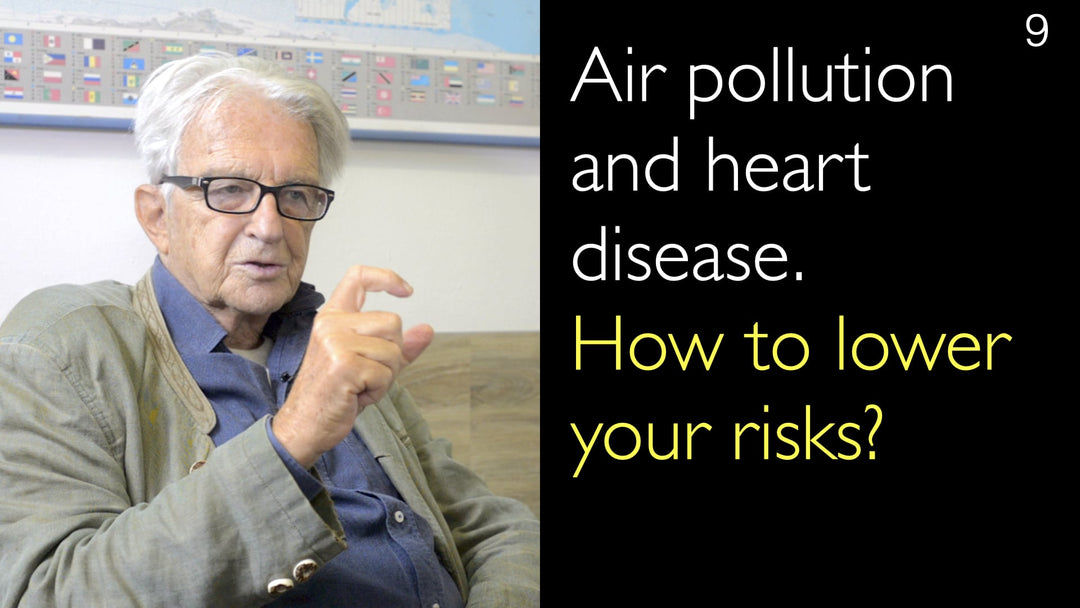Dr. Anton Titov, MD, interviews the specialist on evolving treatment algorithms and device technologies.
Optimal Treatment Selection for Mitral Regurgitation in Elderly Patients
Jump To Section
- Age and Surgical Decision-Making
- Advantages of Transcatheter Mitral Repair
- The Shared Decision-Making Process
- Surgical Backup After Failed Repair
- Factors Predicting Treatment Success
- Evolving Device Technologies
- Full Transcript
Age and Surgical Decision-Making
Dr. Francesco Maisano, MD, clarifies that chronological age alone should not dictate mitral regurgitation treatment selection. He explains that biological age and overall health status are far more critical factors than the number on a passport. For younger patients, particularly those under 60 with degenerative mitral valve disease, Dr. Maisano strongly recommends surgical repair.
Modern surgical techniques allow for nearly invisible incisions and comprehensive valve repair. Surgeons can address the mitral leaflets and annulus simultaneously while also treating concomitant tricuspid valve issues or atrial fibrillation if present. Dr. Anton Titov, MD, explores these nuanced considerations with Dr. Francesco Maisano, MD, cardiac surgeon.
Advantages of Transcatheter Mitral Repair
Transcatheter mitral valve repair offers significant benefits for appropriate candidates, according to Dr. Francesco Maisano, MD. The minimally invasive procedure enables patients to return home within days rather than weeks. This rapid recovery is particularly valuable for elderly patients who may struggle with extended hospital stays.
Dr. Francesco Maisano, MD, notes that results from transcatheter approaches have been excellent for most patients. The procedure is especially advantageous for patients beyond 70 years of age, even those without significant comorbidities. The reduced physical trauma of the endovascular approach makes it suitable for older individuals who might not tolerate open-heart surgery well.
The Shared Decision-Making Process
Dr. Francesco Maisano, MD, emphasizes collaborative decision-making for patients in the intermediate age range of 60-70 years. He thoroughly discusses both surgical and transcatheter options with patients, outlining the advantages and disadvantages of each approach. This transparent conversation ensures patients understand all available treatment pathways.
Patient preference plays a crucial role in final treatment selection, especially when individuals strongly oppose open-heart surgery. Dr. Maisano guides patients through this complex decision while respecting their personal values and concerns about surgical intervention. Dr. Anton Titov, MD, facilitates this discussion about patient-centered care approaches.
Surgical Backup After Failed Repair
Dr. Francesco Maisano, MD, maintains clear communication about contingency plans when opting for transcatheter repair. He explicitly informs patients that if the edge-to-edge mitral valve repair fails, surgical intervention may be necessary within weeks. This honest approach manages patient expectations and prepares them for all possible outcomes.
Contrary to common misconceptions, Dr. Maisano confirms that surgical repair remains possible after failed transcatheter procedures unless valve disruption has occurred. Immediate surgical intervention after unsuccessful transcatheter repair typically allows for successful mitral valve correction. The timing is critical—waiting six months allows healing that might complicate subsequent surgery.
Factors Predicting Treatment Success
Dr. Francesco Maisano, MD, discusses the evolving criteria for predicting transcatheter mitral repair success. The original EVEREST criteria from 2005 remain relevant, focusing on specific valve characteristics that favor positive outcomes. Ideal candidates typically have narrow, single, central lesions with minimal gap between leaflets.
Certain anatomical features present higher risks for transcatheter approaches. Bileaflet mitral valve disease with multiple regurgitation jets often yields suboptimal results with current devices. Deep valve clefts and calcified annulus with thin leaflets also represent challenging scenarios that may require alternative treatment strategies.
Evolving Device Technologies
Dr. Francesco Maisano, MD, highlights rapid advancements in transcatheter mitral repair technologies. The device landscape has expanded significantly since the early days of single-size MitraClip devices. Today, operators can choose from four different clip sizes, including larger and longer options for varied anatomies.
The PASCAL device represents another technological innovation, featuring a clasp mechanism with an additional filler component. Dr. Maisano anticipates continued device development, including new technologies emerging from Asian markets. These advancements continually reshape patient selection criteria and treatment outcomes for mitral regurgitation.
Full Transcript
Dr. Anton Titov, MD: Transcatheter treatment of mitral valve regurgitation is obviously effective. It is a minimally invasive treatment method for mitral valve prolapse. Percutaneous transcatheter heart valve treatment is especially important for patients who might not be able to tolerate open-heart surgery. For example, in very elderly patients, how do you select patients for transcatheter treatment of mitral valve regurgitation, with regards to their age and their functional status?
Dr. Francesco Maisano, MD: Age is not the only measure. Age is, first of all, relative. There is a biological age and age on a passport. So age is not the main reason to make decisions. But for sure, there are many considerations when it comes to age.
In a younger patient, which is very common in degenerative mitral regurgitation and Barlow's mitral valve disease, patients below 60 years of age, I would not so easily propose an endovascular procedure to repair a mitral valve. I know that in these cases, I can provide a surgical approach. A scar is almost invisible because today we really do periareolar or submammary incisions. You don't see anything at the end.
We perform a procedure that includes mitral valve leaflet repair and mitral valve annulus repair at the same time. If there is a need to treat the tricuspid valve, it can be done simultaneously. So it is a complete solution, eventually, even with treating atrial fibrillation.
When you go beyond 60 or 65 years of age, let's say beyond 70 years of age, I start thinking. Even if the patient has no comorbidities, I start having some doubts. It's not easy to make a decision.
The beauty of endovascular transcatheter mitral valve repair is that the patient can go home within days after the procedure. And the results have not been at all bad. We have great results in most of our patients. So in the very elderly, I have no doubts. I offer endovascular mitral valve repair.
At a very young age, I offer surgical methods of mitral valve repair. For situations in the middle, I make decisions with patients. I will tell them the advantages and disadvantages of the two procedures. I try to drive them through this decision-making, and at the end, we take a shared decision.
What is fundamental in my practice: if we go for endovascular mitral valve repair in a 65-year-old patient who really doesn't want to have open-heart surgery, I will really discuss a lot with this patient to convince them that surgery is better. But maybe the patient doesn't want to have surgical mitral valve repair, or there are some doubts because a patient has some comorbidities.
I am very clear with the patient that we do endovascular mitral valve repair, usually edge-to-edge mitral valve repair. If it doesn't work, then within weeks, the patient needs to be operated on. So that we can still repair the mitral valve, and I take care of that too.
I know that I can repair the mitral valve because there is this idea that after MitraClip, you cannot repair the mitral valve surgically. This is not true unless there has been a disruption of the mitral valve or unless you wait for six months after the transcatheter procedure when you have a healing process.
If you open it immediately, you see on most occasions that the transcatheter procedure didn't go well. If you see these patients with failed transcatheter mitral valve repair, they need to be operated on immediately.
Dr. Anton Titov, MD: So, what are the factors that can predict the success or the failure of mitral valve regurgitation treatment by transcatheter methods?
Dr. Francesco Maisano, MD: This is also a moving target because we started in the year 2005 with the Everest criteria. They are still today pretty valid. Everest criteria include narrow lesion, single lesion, central lesion, with not much gap in between the leaflets. This is the ideal condition.
There are several subcategories and details. When you develop your practice, you really find fine details which may predict the success or failure of the procedure. Today we have updated algorithms for patient selection for mitral valve repair method.
But imagine that just a few months ago, our portfolio of devices is being improved. So we are still learning. When we developed the Everest criteria, there was only one size clip for mitral valve repair. Now we have four sizes of MitraClip, and we have larger and longer MitraClip.
We also have Pascal, which is another device for transcatheter mitral valve repair. It is a clasp plus a filler in between. So there are different devices. There will be another device soon coming from Asia.
It's difficult today to give a final judgment on the method of heart valve repair. I think it very much depends on the expertise of the operator. I can more or less identify those patients who are high risk for me.
I think there are some patients where I really discussed open heart surgery. A patient can have a bileaflet mitral valve disease with multiple jets of mitral regurgitation. This is a condition where you do not always get good results with MitraClip.
When you have deep clefts in the valve, we can treat them endovascularly. But still, sometimes there are problems in these patients. When you see calcified annulus and very thin leaflets, it may be another risk factor in a patient.
So there are some patients where I step back, or at least I warn the patient that there might be a less than optimal outcome. Other than that, I have to say that almost every patient can be treated with these transcatheter technologies. If there is no calcium, on most occasions, we can improve mitral regurgitation by transcatheter repair methods.







